-

·
How the 2025 Tariffs Could Impact the AEC Industry
What Architects Need to Know How the April 2025 tariffs can affect costs, supply chains, and client strategy for architecture firms worldwide. The April 2025 tariff changes have introduced new cost pressures and operational uncertainties throughout the Architecture, Engineering, and Construction (AEC) sector. While the long-term impact remains unclear, early signals point to rising material…
-

·
Anatomy of a Successful Business
Agile Architecture Studio Model Increasingly, it appears that the small architecture studio is not simply a miniature version of a large practice. It operates as a distinct business model; it is agile, focused, and strategically lean. In response to shifting global economies, construction methods, and the influence of digital platforms, small firms are redefining what…
-

·
Blockchain: A Game-Changer for Architecture Firms
For years, small architecture firms have navigated a slow and fragmented system—contract negotiations, document approvals, payment cycles, and material sourcing often plagued by inefficiencies, disputes, and delays. But what if there was a way to streamline these processes, reduce risks, and improve cash flow? Blockchain, often associated with cryptocurrency, is already transforming industries like real…
-
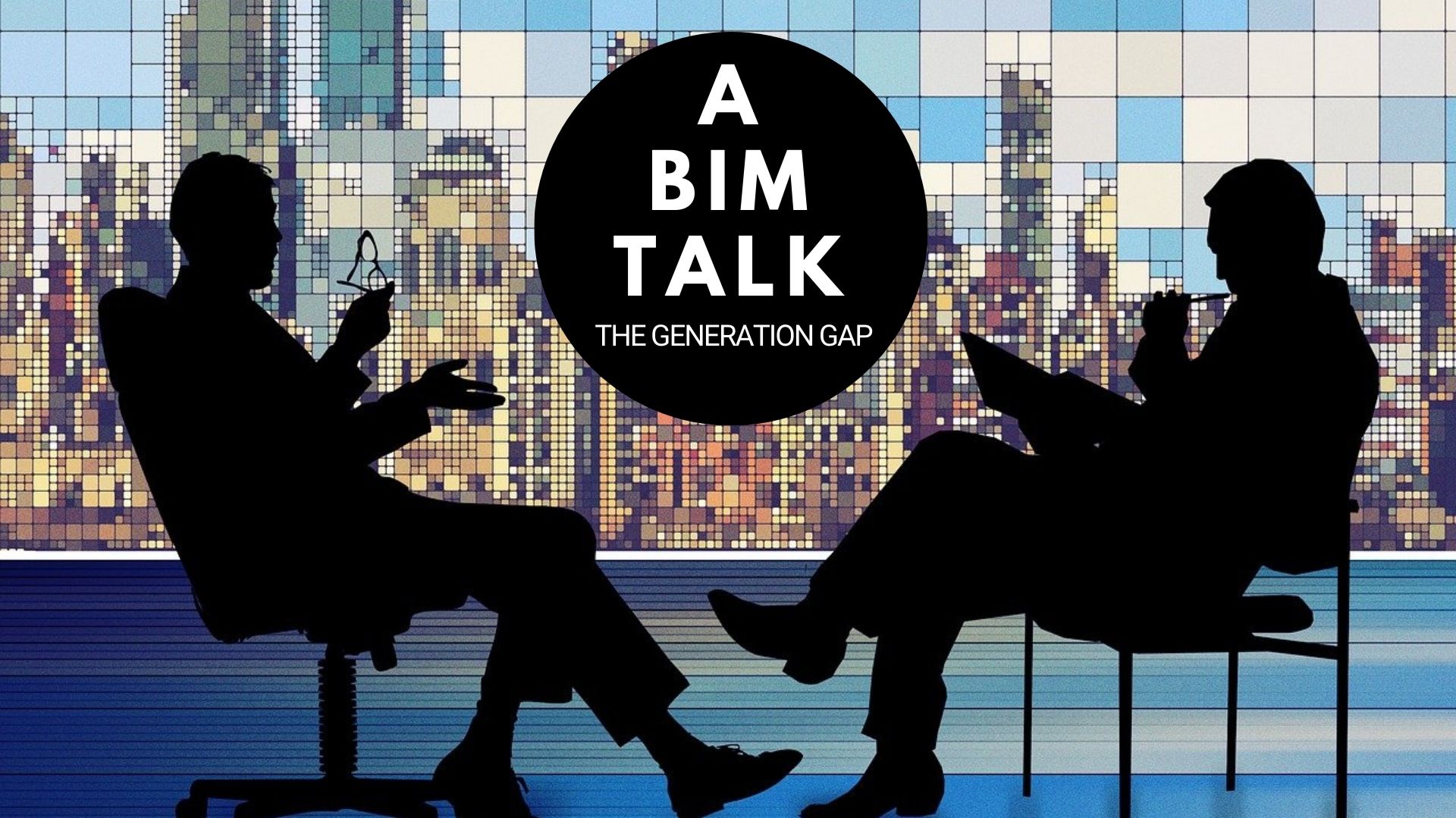
·
BIM Reality; Beyond the Hype
BIM is fundamental to modern architecture, but its full digital integration remains a challenge across the industry. Despite its widespread use, full digital adoption remains inconsistent, particularly in smaller firms and across different skill areas, including AI, automation, and data-driven workflows. As BIM evolves, how can professionals at all levels adapt and contribute to its…
-

·
Finch 3D: The Business of Sustainable Design
How Small Architecture Firms Can Leverage Finch 3D for Sustainable Profits in 2025 For small architecture firms, sustainable design often demands more time and expertise than traditional projects, making profitability a challenge. Clients expect eco-friendly solutions, but stricter regulations and added design complexities can slow down workflows. Finch 3D offers a solution by automating sustainability…
-

·
Women in Architecture: Breaking Barriers, Closing Gaps
Progress, Challenges, and Recognition on International Women’s Day 2025 On the occasion of International Women’s Day 2025, we celebrate the resilience and innovation of women architects worldwide, who are transforming a discipline long shaped by male dominance. While their presence continues to grow, from local impact to global accolades like the Pritzker Prize, AIA Gold…
-

·
Biennale College Architettura 2025: A Strategic Opportunity for Small Firms
The 19th International Architecture Exhibition, Biennale Architettura 2025, curated by Carlo Ratti, will open in Venice on May 10, running through November 23, 2025. Under the theme Intelligens. Natural. Artificial. Collective., the exhibition frames architecture’s response to the climate crisis through a lens of multidisciplinary intelligence. While Ratti’s curatorial narrative and the event’s scale command…
-

·
Hiring an Architect for Your Boutique Firm in 2025: Building Your Brand
For boutique architecture firms, every hire is a statement. With rising costs and sustainability mandates, adding an architect to your small team is not just about capacity, it is about defining your brand. This guide is for small architecture firms with a small team and juggling 5-15 projects yearly, looking to onboard a permanent architect…
-

·
5 Hiring Red Flags for Small Architecture Firms
As a small architecture firm owner, hiring an architect is a pivotal move. With a lean operation, perhaps a dozen projects a year, a single misstep can unravel your momentum and reputation. Current trends, where sustainability and technology are reshaping expectations, the stakes are even higher. This post hones into industry shifts to spotlight five…
-

·
Leveraging Porter’s Value Chain in Architectural Practice
Porter’s Value Chain analysis serves as a strategic framework for achieving competitive advantage by systematically enhancing value across every stage of operations. This allows firms to refine processes, eliminate inefficiencies, and strengthen their market position through continuous optimization. Is architecture a service, a product, or an art? The answer is often “all of the above,”…
-

·
A Business Model for Sustainable African Architecture
Meet Mariam Issoufou; Trailblazer Architect from Niger Mariam Issoufou, a Nigerien architect passionate about sustainable and contextually grounded design, has distinguished herself in the architectural field. Her firm, Mariam Issoufou Architects, provides a compelling model for architects globally, especially those working in emerging markets. This post examines the core principles of her practice, demonstrating how…
-

·
3D Printing Can Transform Your Architecture Firm
Enhancing Design, Operations, and Revenue 3D printing is more than just a tool for model-making; it can be a strong strategic asset that provides architects with a competitive edge to enhance marketing efforts and strengthen brand identity. Model Making; Enhancing Client Communication Producing precise, scaled architectural models in-house is a key advantage of 3D printing.…
-

·
Architectural Trends Shaping the Industry Today: Reflections
‘Cities are built, but the world is impacted. Urban design creates either a sustainable legacy or an environmental liability’ The global architectural scene is a hotbed of innovation. New projects are constantly pushing the boundaries of design, technology, and cultural relevance. From the soaring heights of the Jeddah Tower, a key example of vertical urbanism,…
-

·
Woke Architecture
A Design Philosophy for Awareness and Action The term “Woke Architecture” has emerged in recent discourse, though it seems to lack a formal definition within architectural theory. Broadly, it could refer to design practices that consciously address social justice, inclusivity, and equity. This approach emphasizes creating spaces that reflect diverse cultural narratives and challenge traditional…
-

·
How Architects Work in 2025: Systems Thinking
Architects who will thrive in 2025 are those who see themselves not just as designers of buildings, but as orchestrators of ecosystems. An Opinion As an architect and the curator of this blog, I have spent years observing the ebb and flow of our profession. While the buzz around AI and its transformative potential is…
-

·
Sales Mastery for Architects: A Tailored Strategy for Boutique Firms
Developing a bespoke sales strategy for boutique architecture firms requires a nuanced approach. It needs to reflect the personalized and high-quality services on offer. Drawing inspiration from Simon Squib’s ’10 Steps That’ll Turn You Into A Sales Machine’ here is a tailored sales strategy for architects: Define Your Unique Value Proposition (UVP) Understand Your Target…
-
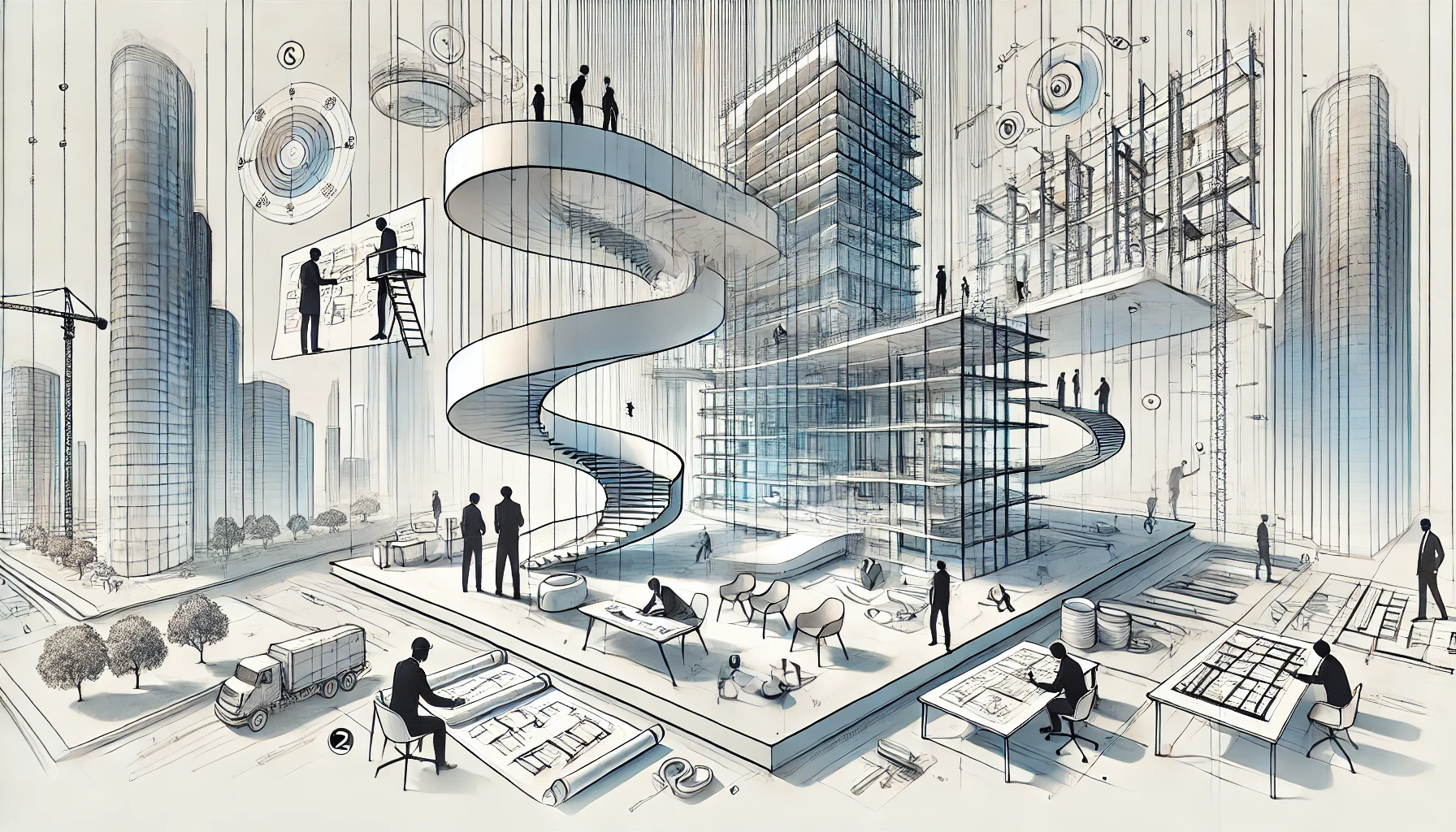
·
Essential Trades for High-Rise Construction
Constructing a high-rise building in modern cities requires collaboration among a wide array of specialized trades. Here is a brief guide to the essential trades usually involved in the construction of a high-rise: Design and Planning Structural Trades Exterior Envelope Interior Construction MEP (Mechanical, Electrical, and Plumbing) FF&E (Furniture, Fixtures, and Equipment) Specialized Trades Final…
-

·
Why Architecture’s Blind Spots Are Hurting Our Cities
Contemporary architecture’s narrow focus on the main facade at the expense of the wider urban context has produced a visually discordant urban landscape that detracts from the overall aesthetic coherence of cities. Reclaiming the Forgotten Facades: The Missing Dimension in Architecture Contemporary architecture often prioritizes the main facade, crafting dramatic and visually arresting designs for…
-

·
Why Architecture Must Design for Chaos; Not Stability
Architects at the Forefront of Rebuilding Societies The way we build our cities can exacerbate the impact of disasters, turning shelters into death traps. Architecture, however, must be a force for sustainable resilience, not fragility! Thriving through Chaos “Chaos: the inherent unpredictability in the behavior of a complex natural system” – Merriam Webster What if…
-

·
Is Your Architectural Firm Failing?
A Framework for Recognition and Recovery Jim Collins’ book, How the Mighty Fall, presents a transformative framework for understanding organizational decline, providing a perspective that can be applied to architectural practices. While architects often focus on creativity and innovation, the same principles that apply to corporate giants are equally critical to smaller design firms. This…
-
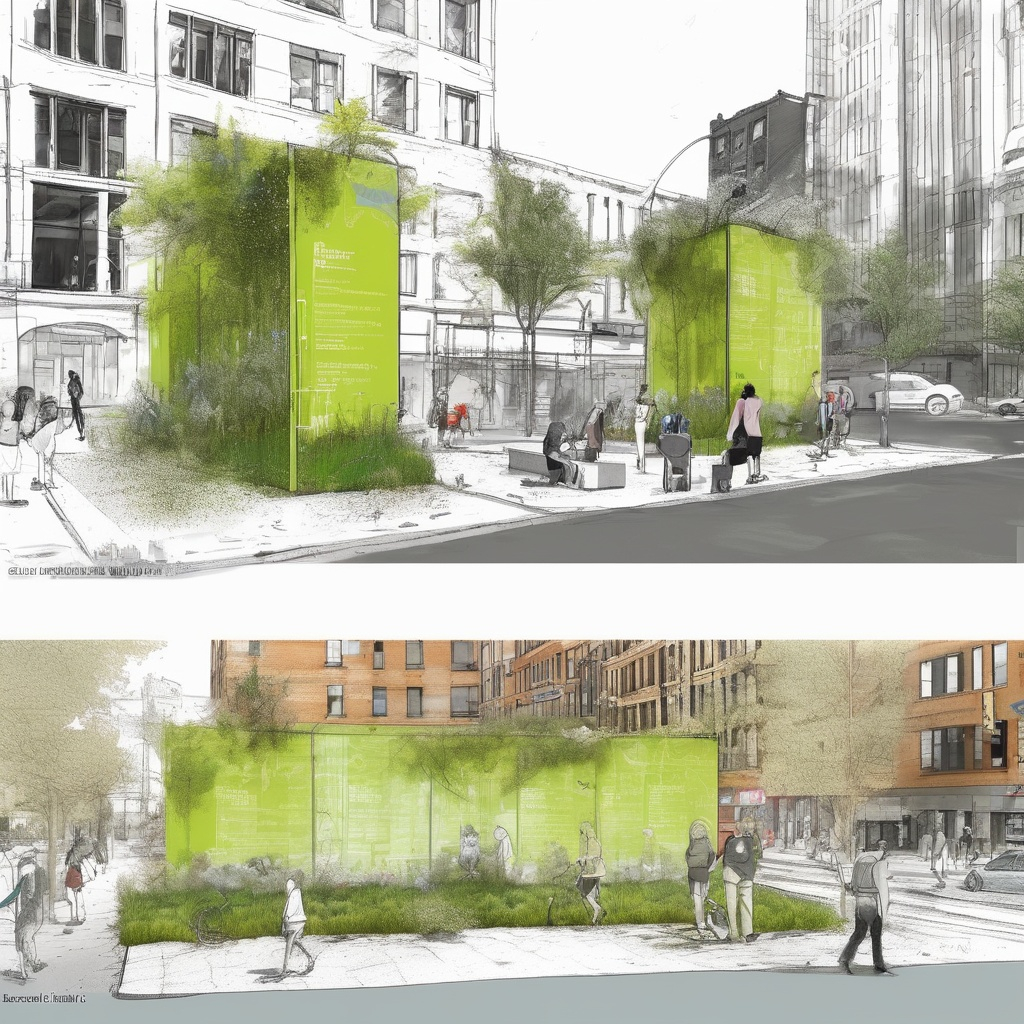
·
The Right to Sanitation: Leveraging the Public Urination Crisis
The global crisis of public urination, a persistent urban blight, has plagued cities for centuries. Despite the UN SDG’s recognition of sanitation as a fundamental human right, the issue remains unresolved, even in areas with public toilets. In cities where such facilities are scarce or inaccessible, the problem is exacerbated. While societal attitudes and personal…
-

·
The Genius Architecture of Shibam: Yemen
A Timeless Model of Sustainable and Human-Centric Design Nestled in Yemen’s Hadhramaut region, Shibam stands as a testament to human ingenuity and a model of sustainable and human-centric design. Renowned for its towering mudbrick buildings, some reaching up to 11 stories, the city showcases how ancient communities thrived by working in harmony with their environment.…
-

·
The Cost of Space Ambitions: Opportunity or Detriment?
Are We Sacrificing Earth to Build Beyond? The quest to build in space, from habitats on the Moon to missions to Mars, and God only knows where else, marks an intriguing era for architecture and design. It brings along with it a plethora of questions about the environmental and human costs we might not be…
-

·
The Space Architect: Design for Extreme Environments
What is Space Architecture? Simply said, space architecture is the design and engineering of structures for use in outer space. It is design and construction for extreme environments where the primary goal is to create a livable environment that protects inhabitants from external elements and maintain life. However, designing for space introduces unprecedented constraints such…
-

·
Architect-Client Relationships: Mitigating Conflict
The architect-client relationship is a cornerstone of successful projects. However, challenging client behavior can disrupt this delicate balance, leading to compromised design integrity, project delays, and financial loss. This post explores the more common examples of such behavior and offers practical contractual strategies to protect architects’ interests. Conflict resolution can indeed be a crucial component…
-

·
Space Architecture: Beyond Earth!
In a thought-provoking Hub Talk, Dr. Samer El Sayary challenges us to envision a future where design meets the needs of humanity in the outer space. An inspiring conversation that ventured into uncharted territory, exploring concepts that could one day sustain life on distant planets. Sparking curiosity and pushing the boundaries of possibility, this hub-talk…
-

·
The Practice of Architecture: Lessons Learnt from Covid19
COVID-19 transformed our world, profoundly influencing architecture in ways that continue to shape the profession. In this Hub-Talk, four leading voices across the architectural spectrum share valuable insights on the lessons learnt, offering unique perspectives on how the pandemic has reshaped business planning, design thinking, construction processes, and our fundamental approach to creating resilient, adaptive…
-

·
3D Construction: Has the Future Arrived?
A Talk with Sebastian Andraos, CEO and Co-Founder at HAL Robotics, about 3D Construction Techniques, in particular Digital Automation The Architects’ Hub Qatar had the privilege of hosting a thought-provoking conversation with Sebastian Andraos, a visionary in the field of human-machine interactions and co-founder of HAL Robotics. His insights into the potential of 3D printing…
-

·
The Power of Bamboo: A Talk with Simón Vélez
Simón Vélez Architects, Colombia The Future is into Natural Materials. It is the only way to save the planet. The Architects’ Hub had the distinct pleasure of engaging in an exclusive dialogue with the renowned architect, Simón Vélez, at the idyllic Heenat Salma Farm in Doha, Qatar. Over a cup of aromatic coffee, Loubna Agzafi…
-

·
Architecture: A Broader More Holistic Definition
How can we construct a comprehensive definition of architecture that synthesizes the perspectives of architectural associations worldwide? “The art or science of building” – Merriam Webster While this simplistic dictionary definition may offer a basic understanding, it often falls short of capturing the complexity that professionals in the field know well. To explore a more…
-

·
The Power of AI: How Advanced Robotics Can Transform Small Architecture Firms
Small architecture firms today face the challenge of staying competitive while managing limited resources. Humanoid robots, like Tesla’s Optimus, could offer a game-changing solution. Unlike traditional AI software, humanoid robots combine advanced technology with human-like interaction, helping architects streamline operations and enhance the client experience. For boutique studios, these robots can handle both simple tasks…
-

·
You’re Not as Unique as You Think
Why Boutique Architecture Firms Must Understand Their Competition Many architects, particularly those in boutique or small practices, often hold the belief that their distinct design style and artistic vision shield them from competition. While this mindset stems from a place of confidence, it can lead to significant blind spots in an increasingly competitive market, inadvertently…
-

·
Omnichannel Marketing for Architects; Paradigm Shift
The adoption of an omnichannel business model presents a significant opportunity for architecture firms, as it aligns with broader trends in consumer behavior and the evolving expectations of clients in the digital age. Traditionally, architecture firms have operated through direct, face-to-face interactions with clients, relying heavily on reputation, networking, and word of mouth personal referrals.…
-

·
Architecture in the Digital Sphere; Gaming Advantage
Zaha Hadid Architects and Fortnite Re-imagine London In the dynamic landscape of contemporary architecture, dominating the market requires a relentless pursuit of innovation. In this article, I explore how architectural firms can gain a competitive edge by embracing innovation and adapting to changing market conditions. I will be using the recent collaboration between Zaha Hadid…
-

·
Succession Planning for X-small and Boutique Architecture Firms
Solopreneurs & Small Partnerships Succession planning for X-small boutique architecture practices; those operated by solopreneurs or small partnerships (usually 2 founders), tends to be inherently personal and subjective. It’s not always about ensuring continuity as in the case of larger corporate firms; rather, it’s about creating a strategy that aligns with the individual goals of…
-

·
Succession Planning: A Cornerstone of Sustainable Leadership in Architecture
In the dynamic world of architecture, where creativity and client relationships reign supreme, a well-crafted succession plan is not a luxury but a necessity. It is the cornerstone of sustainable leadership, safeguarding the unique brand identity, the design philosophy, and the trust built with clients over time. Unlike reactive contingency plans, succession planning takes a…
-

·
Architect’s Guide to Market Opportunities: Capitalizing on Industry Trends
According to a 2023 Architectural Services Industry Report by Benchmark International, the global architectural services market is set to grow steadily at a “4.8% compound annual growth rate (CAGR) through 2030″. “The architectural services industry comprises various companies that design and plan buildings and structures spanning residential, institutional, leisure, commercial, and industrial spaces. Key areas…
-

·
Navigating the Post-AI Landscape
Artificial Intelligence has transitioned from a futuristic concept to an indispensable tool for architects. It’s no longer a question of if AI will transform architecture, but how. Post-AI marks a stage where AI is a strategic imperative for growth, offering architects unique opportunities to disrupt their practices. AI may not take over the architects’ job,…
-

·
AUC Campus Architecture; Sustainable Design
Introduction The American University in Cairo’s New Cairo Campus spans 260 acres and is designed to accommodate over 6,500 students and 2,500 faculty and staff. It includes a range of academic facilities, including five schools, a Campus Center, a library, modern classrooms and laboratories, and multiple open courtyards. The campus integrates advanced technology, environmental sustainability,…
-

·
Subterranean Architecture and Concealed Spaces
In architecture, the exploration of subterranean spaces offers a compelling narrative of innovation and adaptation. While above-ground structures often capture the public’s imagination, the world beneath our feet holds a trove of architectural marvels that blend historical ingenuity with contemporary advancements. This post reveals how hidden spaces address diverse challenges, from urban density to environmental…
-

·
One Square Meter Living
Recent studies emphasize the role of micro-architecture in urban planning, highlighting its contributions to sustainability and livability. By minimizing individual dwelling footprints, micro-architecture enables the creation of green spaces within dense urban environments, which are essential for mitigating the urban heat island effect, improving air quality, and supporting biodiversity
-

·
Rebuilding Communities after Conflict
Disasters, whether natural or man-made, devastate communities, leaving millions without homes. In these critical times, the need for housing extends beyond mere shelter. Displaced populations require structures that ensure physical security and foster emotional well-being. Architects, with their unique skills and understanding of these complexities, are pivotal in crafting comprehensive design briefs for disaster relief…
-

·
Architects Redefining Sustainable Design
Sustainable architecture continues to push boundaries, combining innovative design with eco-friendly solutions to directly combat climate change. Here are five cutting-edge projects from around the world that stand out for their unique approaches to sustainability and their potential to inspire future architectural practices.
-

·
Company Profile; a Powerful Tool for the Architect’s Brand Identity
In today’s fast-paced and highly competitive architectural landscape, refining your company profile and leveraging the right mediums to showcase your brand isn’t just an option; it’s a necessity. A clear, compelling brand identity can distinguish your firm in a crowded market, attract the right clients, and ultimately drive your business’s growth. Here’s why and how…
-

·
From Olympic Medals to Monuments: the role of architecture
Architecture has always been at the heart of the Olympic Games, even when it’s not directly competing for a medal, as was the case from 1912 to 1948. Architecture is the very visible, yet ‘invisible’ hand shaping the Olympic experience, transforming host cities into arenas of design innovation. The iconic structures of Olympic venues, competition…
-

·
Urban Infills and Micro Pocket Parks
Transforming Underutilized Spaces with Micro Architecture. As cities around the world continue to grow and evolve, the challenge of maximizing limited urban space becomes increasingly pressing. Urban infill, the process of developing vacant or underutilized parcels within existing urban areas, offers a sustainable solution to this challenge. One emerging trend within urban infill is the…
-

·
The Rise of Micro-Architecture
The Tiny Homes Market size is estimated at USD 19.20 billion in 2024, and is expected to reach USD 27.20 billion by 2029, growing at a CAGR of 5% during the forecast period (2024-2029).” – Mordor Intelligence
-

·
Sustainability; A social goal for long-term coexistence on Earth
Designing for thriving communities: Sustainability in the built environment is the practice of designing, constructing, and operating buildings and urban spaces in a manner that meets current needs without compromising the ability of future generations to meet their own needs. This holistic approach focuses on environmental, economic, and social dimensions to create resilient, equitable, and…
-

·
Navigating Change; Monitoring and Evaluation
Monitoring and evaluation are crucial for the successful transition of a boutique architecture firm to a new business model. This involves tracking performance, gathering feedback, and making iterative adjustments to ensure the business model remains effective and aligned with strategic goals. Continuous monitoring and evaluation are essential for sustaining the benefits of the change and…
-

·
Navigating Change; Implementation Planning
Designing a new business model is only part of the process. Implementing it effectively is crucial for realizing the intended benefits. This involves developing a detailed action plan, managing change, and addressing potential risks. Successful implementation requires careful planning, resource allocation, and continuous stakeholder engagement.
-

·
Navigating Change; Designing Your New Business Model
Part 4 of 6 – recommended pre-requisite posts Part 1; Evolving Your Boutique Architecture Practice Part 2; Assessing the Current Status Part 3: Setting Strategic Goals With strategic goals in place, the next step is to design a new business model that aligns with these goals. This involves rethinking the value proposition, revenue streams, cost…
-

·
Navigating Change; Setting Your Strategic Goals
Using the SMART criteria (Specific, Measurable, Achievable, Relevant, Time-bound) is effective and widely used for goal setting. However there are several other, innovative approaches gaining traction such as; PACT, OKRs, FAST, HARD, V2MOM, and BHAGs. These alternatives provide diverse methodologies to enhance agility, engagement, and visionary leadership.
-

·
Business Strategy Emerging Trends
Beyond Mission, Vision, Goals! While foundational elements like vision, mission, goals, culture, and values remain essential to building a strong business, it’s time to rethink how they are approached and applied. What is your company’s Purpose? The traditional mission statement, which articulates a company’s primary objectives and activities, is being augmented or even replaced by…
-

·
Navigating Change; Assessing the Current Status
Having a clear understanding of the current status of a business involves a thorough analysis of the existing business model, operational processes, resources, and market positioning. This assessment guide will serve as a baseline from which to plan and implement changes.
-
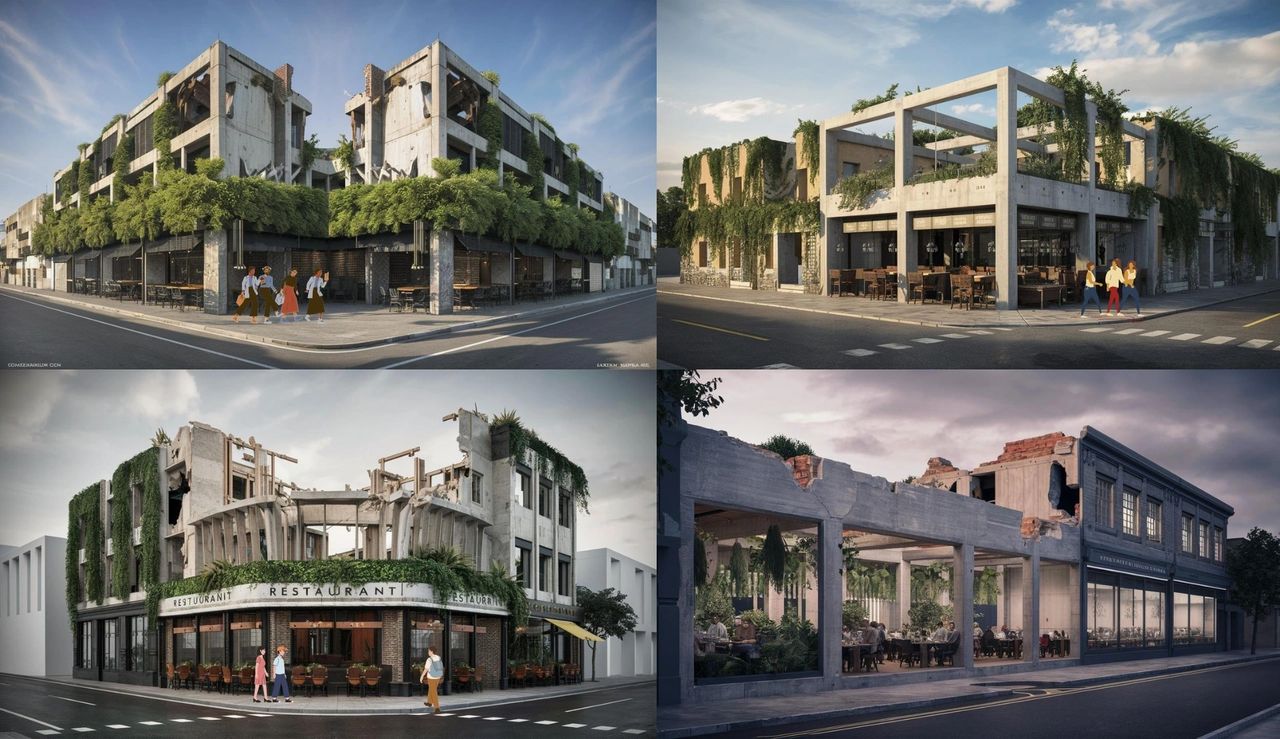
·
Urban Adaptive Reuse with a Twist; Conflict Zones
Telling the Stories of Nations through Design ‘From Palestine to Sudan, Syria to Iraq, and beyond, countless cities grapple with the aftermath of conflict, desperately needing spaces that foster healing, social cohesion, and economic revival.’ The idea presented in this article is the concept of adaptive reuse with a focus on preserving the physical scars…
-

·
Navigating Change; Evolving Your Boutique Architecture Practice
July 8, 2024|#Business of Architecture Part 1 of 6 This is the first in a six-part series intended to guide small and boutique architecture firms through modifying their business models. It provides a structured approach and actionable steps to facilitate well-informed decisions. Understanding the Need for Change The architecture industry is constantly evolving. For boutique…
-

·
Adaptive Reuse in Architecture
A Growing Business Niche to Explore Adaptive Reuse; a significant niche offering a unique business opportunity for architects. In this post I shall take a closer look into the intricacies of adaptive reuse and its potential to shape the industry’s future. In addition to examining the core principles of Adaptive Reuse, I will also…
-

·
Vertical Farms; Disrupting Urban Landscapes
A Niche Opportunity for Architects “The global vertical farming market size was valued at $5.70 billion in 2023 & is projected to grow from $6.92 billion in 2024 to $50.10 billion by 2032” – according to Fortune Business Insights Event: The Vertical Farming Show 10-11 September 2024, Dubai, UAE. The “5th Global Vertical Farming Show” and the only exclusive…
-

·
10 Steps to Create Your Green Architecture Strategy
A Competitive Edge As the demand for sustainable design continues to rise, architecture firms must adapt their business strategies to remain competitive and meet client expectations. By seamlessly integrating green infrastructure principles into your existing practices, you can position your firm as an industry leader, drive cost savings, and contribute to a more sustainable built…
-

·
Energy Efficiency in Buildings
The Business Case for Architecture Need for Change | Energy Basics | Building Efficiency Defined | Measuring Efficiency | Case Studies | Net-Positive Buildings | Business Case-Benefits | Business Case-Ethics | Business Case-Financial Advantages Buildings significantly contribute to global energy consumption. To tackle climate change and reach net-zero carbon emission goals by 2030 for new…
-

·
A Business Case for Environmentally Conscious Architecture
Observing World Environment Day 05.06.24 The Business Advantage of Eco-Architecture “Oxford Economics forecasts that the global volume of construction work is expected to increase by US$4.2 trillion over the next 15 years, bolstered by the burgeoning green economy” – Global Construction and Infrastructure report by RICS. As the world moves towards a more sustainable future, environmentally conscious…
-

·
The Case for Biomimetic Architecture
Biomimicry; A Powerful Tool for Innovation, Sustainability, and Cost-Effectiveness Biomimicry presents a compelling approach to architectural design by emulating nature’s ingenious solutions. Here’s why embracing biomimicry can benefit architects’ businesses and clients: Notable Figure in Biomimetic Architecture Michael Pawlyn Michael Pawlyn, a British architect born in 1967, is recognized for his innovative work in biomimetic…
-

·
A Viable CSR Business Strategy; Pro-bono in Architecture
What Does Your CSR Look Like? Is pro-bono work a feasible and beneficial component of your firm’s CSR strategy? Can it support sustainable design and construction? Architecture is fundamentally about social responsibility and accountability. The enduring nature of buildings and their far-reaching impact on humanity and the environment demand a holistic consideration of all aspects, even…
-

·
7 Key Trends in Sustainable Architecture
Build Your Competitive Edge in 2024. “In the lineup of climate villains, architecture towers above many” – New York Times In a world where buildings consume nearly 40% of global energy and produce approximately one-third of greenhouse gas emissions, it’s clear that architects hold the key to unlocking a more sustainable future. This is according to…
-

·
Regenerative Architecture
In an era marked by rapid urbanization and intensifying climate change, it’s crucial for the architecture industry to evolve beyond the tenets of conventional sustainable design. To truly make a lasting impact, I believe the industry must shift its focus towards holistic and regenerative design practices that prioritize rejuvenating the environment and fostering a net-positive…
-

·
Building a Resilient Architecture Team; Expertise and Staffing
Your Team is the Backbone of your practice, instrumental in driving innovation, fostering client satisfaction, and ensuring long-term success.
-

·
Tips to Future-Proof your Architectural Practice
7 Basic Strategies to adopt To stay relevant in a rapidly evolving industry, being ahead of trends, and not just keeping up, is key to ensuring a resilient architectural practice.
-

·
Architecture in the Olympics: A Blast from the Past
From 1912 to 1948, the Olympic Games included five creative arts categories, with architecture taking center stage. The first competition kicked off at the 1912 Stockholm Games, with entries tasked with blending art and sport.
-

·
Why Architects Need Business Savvy in Today’s Market
Many aspiring architects fall prey to the misconception that exceptional design will automatically attract clients. While a strong portfolio is crucial, it’s just one piece of the puzzle. Clients are looking for more than just beautiful visuals. They need someone who understands budgets, timelines, regulations, and the complex web of factors that contribute to a…
-

·
Market Segmentation for Architects; A Guide to Finding Your Niche
“Passion is Fuel, But Market Fit is the Engine”. Market segmentation is a key strategy to aligning your design passion and skills with market needs. In other words, to find the perfect fit between you and your target audience. Market segmentation helps tailor your services to meet specific customer preferences, enhancing relevance, engagement, and overall…
-

·
Key Players in Business: Big 4 & MBB
Being aware of the Big 4 and MBB, who they are, what they do and leveraging their expertise, can be valuable for startups and small businesses.
-

·
Lean Canvas Vs Business Model Canvas
As an entrepreneur, you’re likely familiar with the Lean Canvas and the Business Model Canvas (BMC) as valuable tools for developing and validating your business ideas. While they share some similarities, understanding their differences can help you choose the right approach for your specific situation. In this blog post, we’ll provide a general guide on when and…
-

·
Why architects’ should be AI capable
The future of architecture business is a partnership between human creativity and AI’s computational power. The business of architecture is evolving. Architects are increasingly wearing the hats of both designer and entrepreneur. AI can be a secret weapon in this new landscape.
-

·
Innovative Business Models for Architects & the Skills you need
The digital era unlocks exciting possibilities for architects and design leaders seeking to blend passion with sustainability and business acumen. Beyond traditional solo or freelance models, here are diverse business models you can explore, along with the key skills needed to bring them to life
-
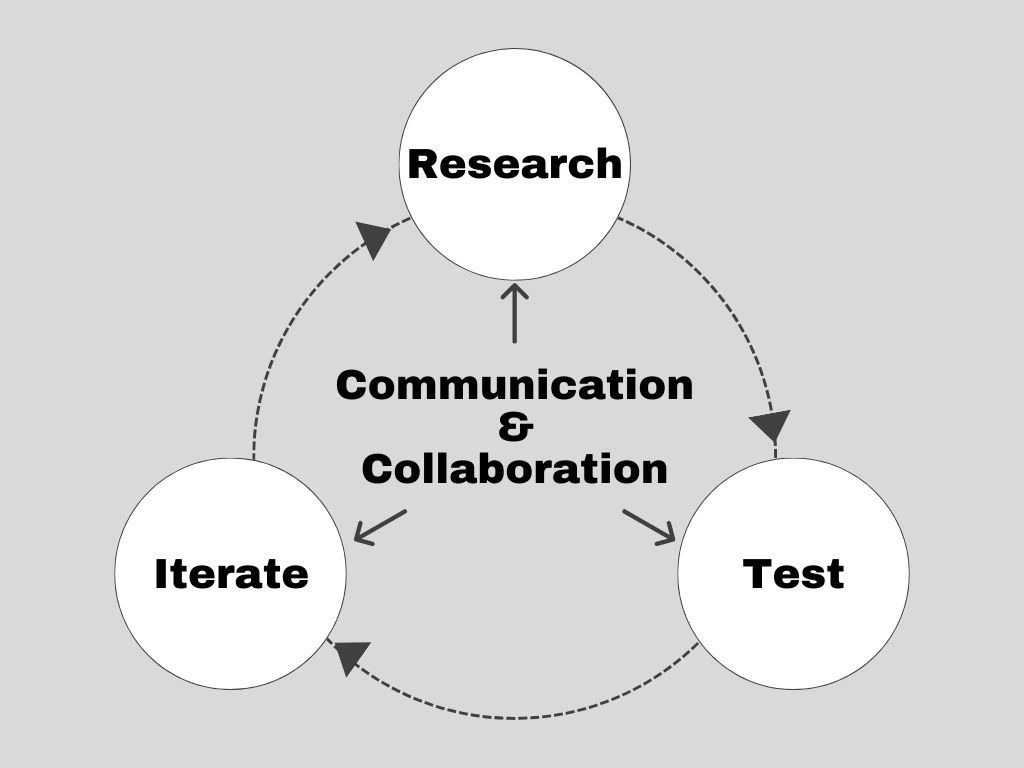
·
Research, Test, Iterate
The basics of data insights In a dynamic marketplace, agility and informed decision-making are critical. The Research, Test, Iterate (RTI) model provides a structured, yet adaptable framework for sustained growth. In today’s rapidly changing market, businesses must be flexible and informed. Here is how it works: 1. Research: Market Insights Understanding your market is paramount.…
-
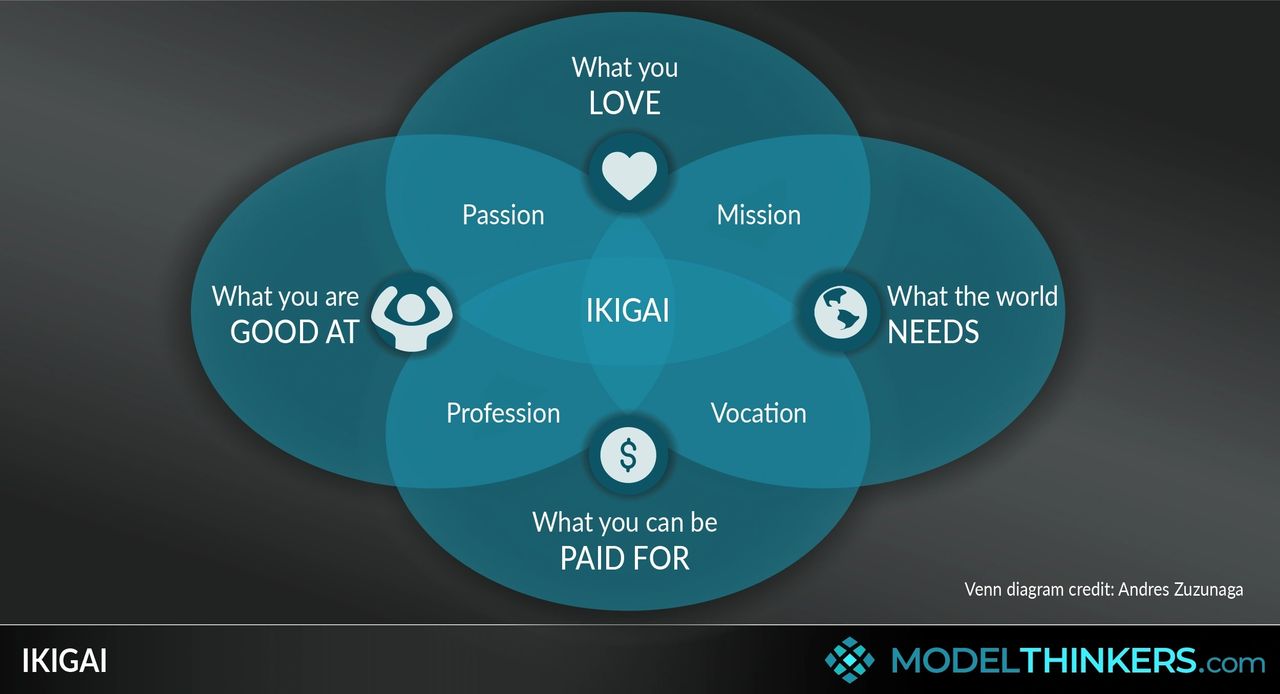
·
Make your Life Mission Your Business; IKIGAI
Unleashing the Power of IKIGAI 1. Discover Your Passion Identify what aspects of architecture truly excite you. Is it: Finding your passion is crucial for a fulfilling entrepreneurial journey. 2. Uncover Market Needs Align your passion with market demands: This alignment ensures your business model resonates with both your aspirations and industry needs. 3. Embrace…
-

·
How to Start an Architecture Firm: 7 Essential Steps
As you embark on the exciting journey of starting your own practice, here is a guide to set yourself up for success, providing a roadmap to navigate through the crucial initial steps.
-

·
3 ways to define your Business Idea
Passion or practicality? What sparks your business idea first? Do you dream up solutions to problems you see, or chase your passions hoping they will find a market fit? For architects and designers, this question can be especially tricky.
-

·
Find Your Ideal Work-Style: Solopreneur, Freelancer, Remote, or…?
Unlock the Workstyle That Fuels Your Entrepreneurial Journey. The entrepreneurial landscape is constantly evolving, offering diverse options to fit individual goals and preferences. Here is a broader view:
-

·
The Lean Canvas
Efficient, Focused, Adaptable The Focus of the Lean Canvas is to validate assumptions early on, not develop a detailed business plan. Developing a comprehensive business plan can be time-consuming and overwhelming for new ventures. In this day an age it is necessary to realize the importance of agility and adaptation in the early stages. This…
-

·
Startup? Taming the Chaos, Maintaining Sanity
Launching a business can be exhilarating, but the whirlwind of activity can quickly become overwhelming. Here are a few tips to help you focus, avoid the chaos in your mind and maintain momentum.

